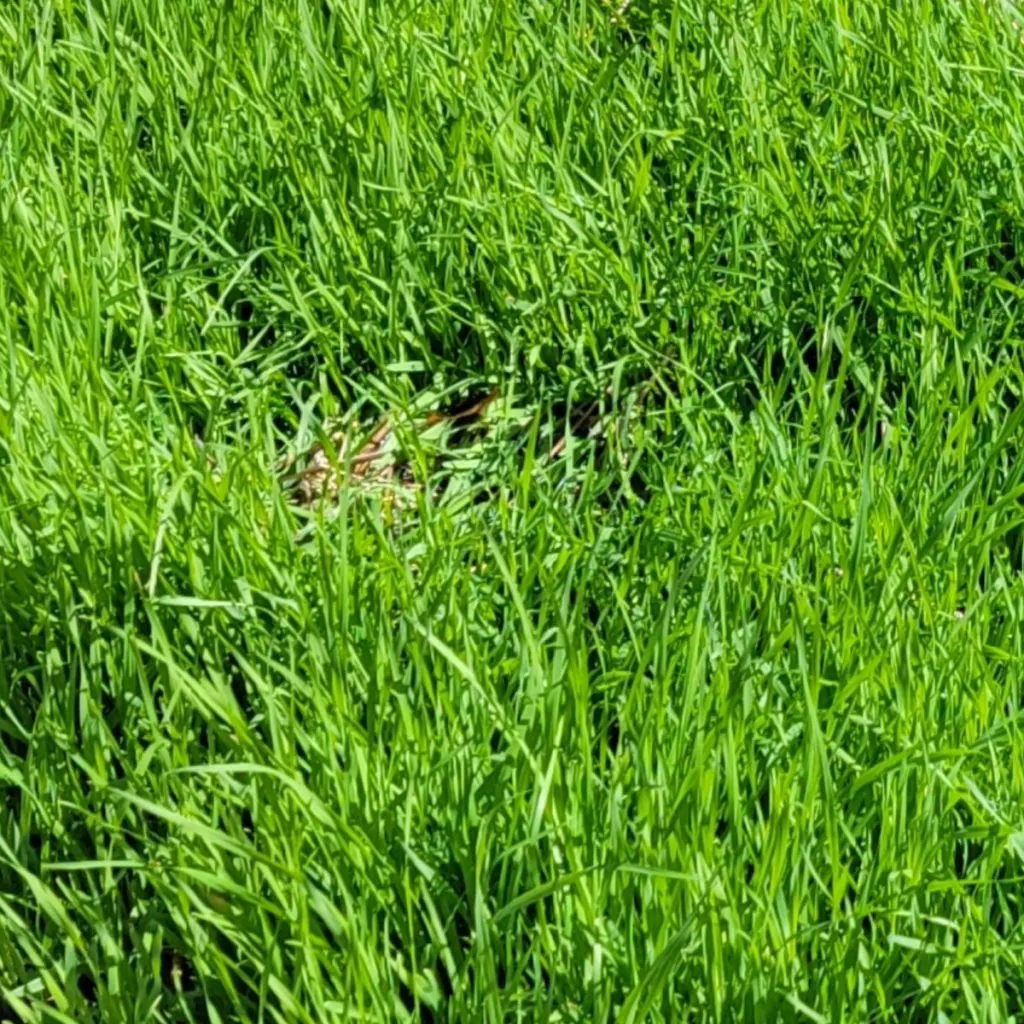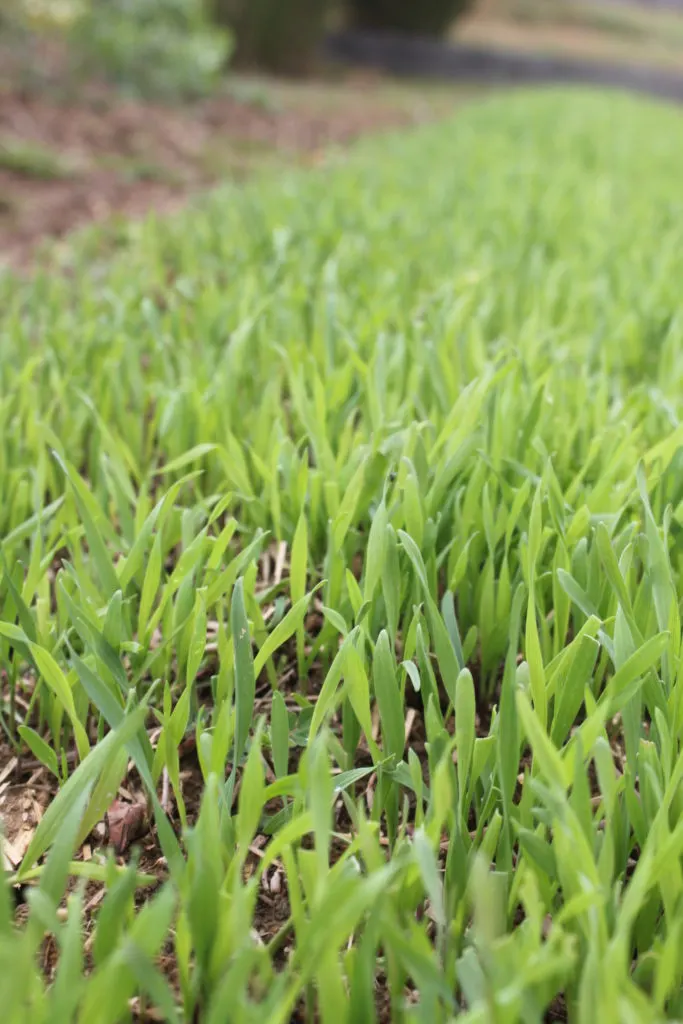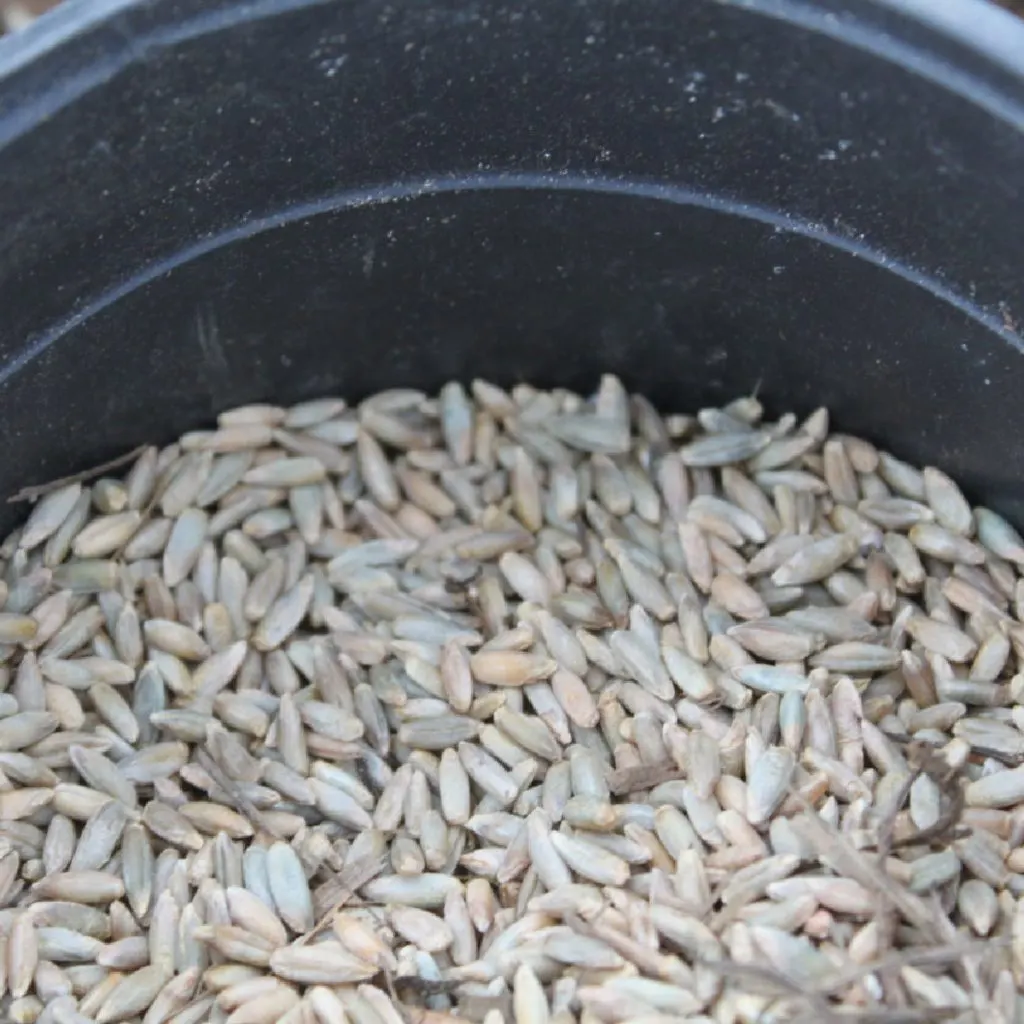One of the best ways to protect and recharge the soil in your garden this fall is with a cover crop – especially when you plant your garden with annual rye!
Annual rye, or cereal rye as it is also known, is a grain crop that can be sown in the fall directly over bare garden soil. The crop has been used for decades by farmers to help rejuvenate their fields – but it works equally well for backyard gardens too.
One thing is for sure, annual rye has amazing benefits for both you and your garden’s soil. As you will see below, not only can it help revitalize tired, lifeless soil – it can also protect your garden against erosion all winter long. Even better – it can also stop next year’s weeds in their tracks.

The Amazing Benefits of Planting Annual Rye in Your Garden
Annual rye performs well in nearly every type of garden soil. Its thick roots dig deep into the soil, even reaching down deep into tough clay and hard-packed dirt. As these roots grow, they help break up compacted soil, making it easier for other plants to thrive.
But rye does more than just loosen the ground. When it dies back in the spring, all of its foliage, roots, and stems decompose, enriching the soil. And as the roots below the soil break down, they leave behind small channels filled with rich organic matter, allowing air, water, and nutrients to reach your vegetable plants.
But that’s not all the goodness a rye cover crop can bring to your garden! It also happens to be great for weed control. As it grows in the fall, it quickly creates a thick barrier of green that overtakes existing weed seedlings and snuffs them out.
Even more, its thick covering also blocks weed seeds that blow in from finding bare soil. And that means next year’s weeds will never get the chance to develop.

Last but not least, annual rye is extremely low maintenance. Both to plant and care for. In fact, you don’t even have to till it or dig it into the soil in the spring. You only need to cut it back a few times to terminate it – which means you don’t have to disturb the soil in the least!
How To Plant An Annual Rye Cover Crop This Fall
As late fall approaches and you begin to clear your garden, it’s time to plant. The first big key to success is making sure you are purchasing the correct seed.
Annual rye goes by several names, like winter rye or cereal rye, but it’s important to buy the right kind for your garden. Unlike perennial or annual rye grass, you want the rye that is a true cereal grain. Its seeds are much larger than regular rye grass seeds. Affiliate Link: Cereal Rye Grain Seeds Open Pollinated Cover Crop
You can usually find cereal rye at feed stores, online, or at local gardening centers. But make sure you are purchasing cereal rye and not perennial or annual rye grass. A simple test is that if your seed looks tiny like grass seed, you are not getting the right type.

Once you have the right seed, planting is a snap! In fact, all it takes is a rake, seeds and a little straw and you can quickly complete the task!
Planting – How To Plant An Annual Rye Cover Crop This Fall
To begin, lightly rake each row to scratch the soil surface. Next, cast the cereal rye seeds over the rows, much as you would if you were planting grass seed. As for how many seeds to plant – aim for casting 20 to 30 seeds per square foot. This is more than enough for thick growth.
After casting your seed, lightly rake the soil to help set the seeds into the soil. You do not need to cover the seeds completely. Then, all that is left is to add a thin layer of straw on top. This will help to both keep moisture in and keep birds and other animals from eating the seed until it sprouts.
Within five to seven days, you’ll start to see bright green shoots pushing through the soil. In just a few weeks, your garden will be covered in a thick blanket of green.

Winter Care – How To Plant An Annual Rye Cover Crop This Fall
As winter sets in, cereal rye will go dormant. It will stay a little green but all growth will stop. The heavy thick coating that grew in the fall though is perfect for protecting the soil throughout the cold months.
As the weather begins to warm in early spring, the rye will begin to come back to life. As soon as it does, it’s important to start mowing or trimming it back. This will help to begin to terminate the crop and allow you to plant right through it later in the spring.
A lawn mower or a string trimmer both work well depending on the size of your garden. As you trim or mow, you can mulch the clippings back into the beds to boost organic matter. You can also if you wish collect them and place them in your compost bin. To help the crop die off faster, mow or trim frequently. Within two to three weeks, the rye will slowly fade away.
All that is left to do is plant right through the leftover rye. There is simply no need to till. By not tilling, you keep all of the weed seeds on top of the soil from ever making it to the soil below. And that means far less weeds for you to deal with all season long! For more tips on keeping your garden weed free, be sure to check out How To Have A Weedless Vegetable Garden This Year – By Working Less!
Here is to planting annual rye this fall in your garden – and to having a garden that is ready to grow next spring. And if you are looking to cover crop your raised beds as well, be sure to check out our article: How To Plant A Cover Crop In Raised Beds.
Simple Garden Life
Follow Our Facebook Page For Even More Great Tips! Simple Garden Life Facebook Page
Simple Garden Life is a website dedicated to keeping gardening fun, simple and enjoyable! We publish two new articles each week along with a new garden podcast episode every two weeks. This article may contain affiliate links.
